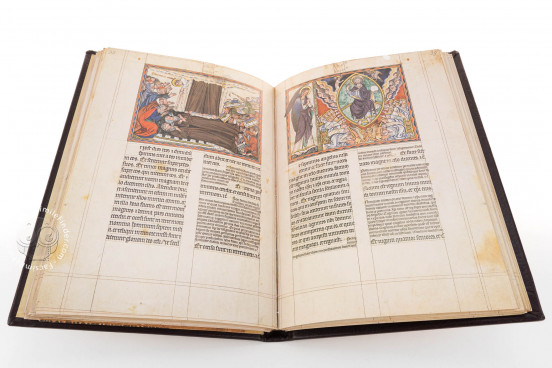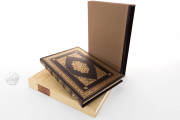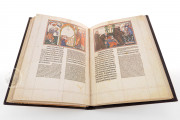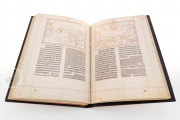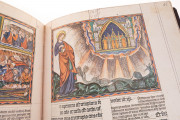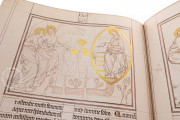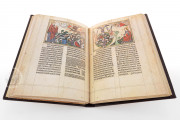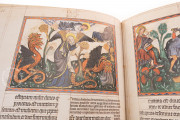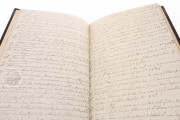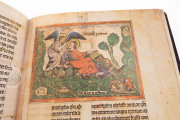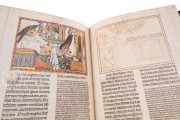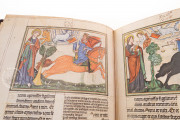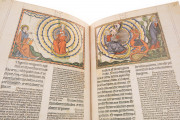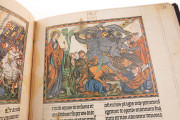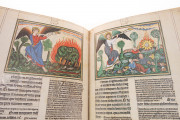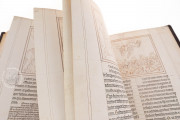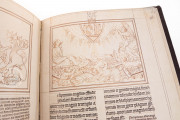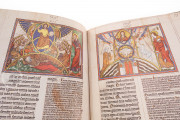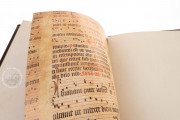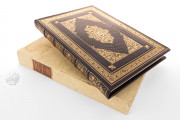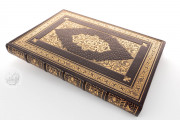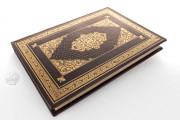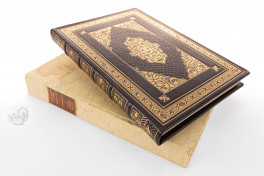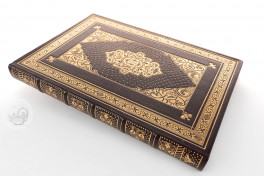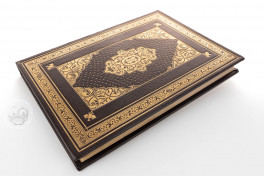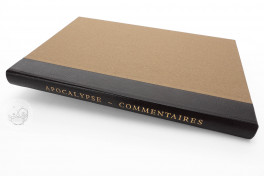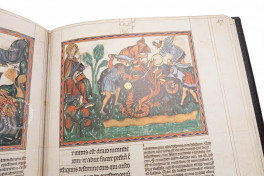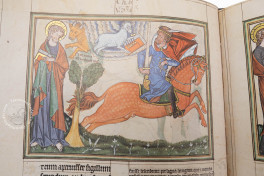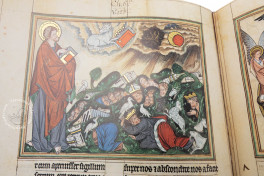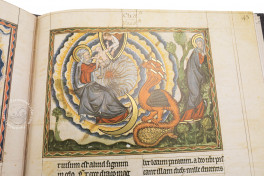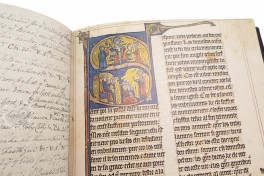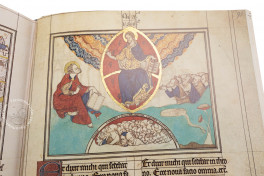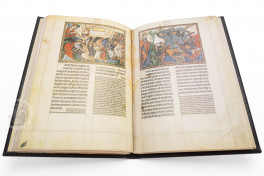The mid-thirteenth-century Oxford Apocalypse is among the finest apocalypses created in England. Emulating the new Gothic style originating in the French Court, this manuscript is an elegant and courtly work made for the heir to the English throne. Also known as the Douce Apocalypse, it is part of the small Westminster group of English apocalypses. The illuminations sit in the top half of the pages with the text in two columns beneath. Rich colors and gilded details radiate from the completed pages.
Made in Westminster or perhaps Salisbury, the book contains a Latin version of the Book of Revelations with commentary by Berengaudus and prefixed with a fragmentary Anglo-Norman French translation. It is a splendid example of a popular but brief manuscript tradition of illustrated apocalypses.
An Innovative Work Left Incomplete
With almost 100 illuminations, the Oxford Apocalypse’s elaborate illustrative cycle is a rich source of apocalyptic iconography in the newest style out of France. The manuscript is also an invaluable source of information about the manufacturing of books in the high Middle Ages.
Left unfinished, the pages are in various stages of completion allowing for a study of the illustrative process. Some are entirely complete with rainbow borders, vibrant colors and gleaming gold. Others are partially painted. Several are left as elegant ink drawings, some with gilding, demonstrating the talent of draftsmanship at work.
Two Scripts for Two Texts
Apocalypse manuscripts are often two separate texts, the biblical Book of Revelation and its accompanying commentary by Berengaudus. The difficulty for scribes is how to write the much shorter biblical verses and the much longer commentary in a way that keeps the sacred text separate and clear while still allowing for the inclusion of the interpretation.
In the Oxford Apocalypse, the biblical text is written twice as large as Berengaudus’s commentary, a particularly elegant solution. The Gothic Pressica script is bold and black. Colorful and gilded capitals were planned throughout, however the unfinished state of the manuscript meant that many were not completed leaving empty fields blank for the illuminators.
A Masterpiece for a Prince and Princess
The main body of the book is in Latin and this is prefixed by a partial Anglo-Norman French version of the same with an anonymous commentary. The initial S of the French prologue is historiated with portraits of the book’s patrons, Prince Edward (later Edward I of England) and Princess Eleanor of Castile. This dates the manuscript fairly precisely between 1265-1270.
Edward is depicted with his princely heraldic arms and he left England on crusade after 1271, the likely cause of the book’s incomplete state. The first modern record of the manuscript is in 1833 when it was sold as Lot 56 at Christies from William Wilson’s collection. Later that same year, Francis Douce purchased it from bookseller Thomas Thorpe and in 1834 it was bequeathed to Bodleian.
We have 2 facsimiles of the manuscript "Oxford Apocalypse":
- Die Apokalypse Oxford facsimile edition published by Akademische Druck- u. Verlagsanstalt (ADEVA), 1983
- Apocalypse de Jean facsimile edition published by Club du Livre, 1981

